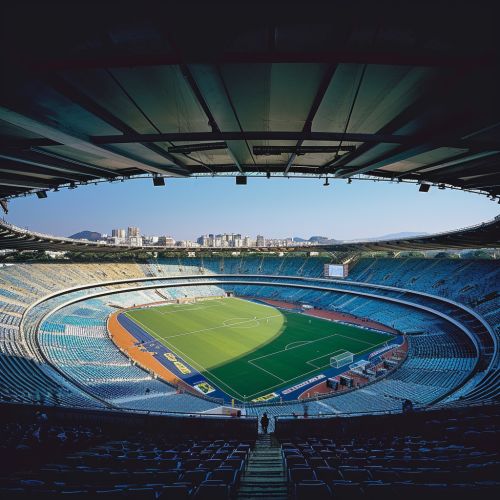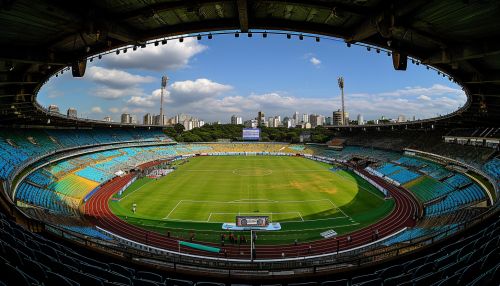Maracanã Stadium
History
The Estádio do Maracanã, officially known as Estádio Jornalista Mário Filho, is one of the most iconic football stadiums in the world, located in the heart of Rio, Brazil. The stadium was built for the 1950 World Cup, marking a significant milestone in the history of international football. The construction of the stadium began in August 1948, with the intent to make it the largest and most impressive football stadium in the world.


The stadium was named after the Maracanã River, which runs through the northern part of Rio de Janeiro. The term "Maracanã" is derived from the indigenous Tupi-Guarani language, meaning "like a sea" or "large, noisy sea", an apt description for the roaring crowds that fill the stadium during matches.
Design and Construction
The design of Maracanã Stadium was a collaborative effort led by architects Raphael Galvão, Pedro Paulo Bernardes Bastos, Orlando Azevedo, and Antônio Dias Carneiro. The construction was overseen by engineer Humberto Menescal, and the project was managed by the Department of Public Works and Traffic of the Municipality of Rio de Janeiro.
The stadium was designed to accommodate a maximum capacity of approximately 200,000 spectators, making it the largest stadium in the world at the time. The design was based on a two-tier structure, with the lower tier accommodating the majority of spectators and the upper tier providing additional seating. The stadium was also designed with a large, open bowl shape, allowing for unobstructed views of the pitch from all seating areas.
Notable Events
Maracanã Stadium has been the venue for numerous notable events in the history of football. The most significant of these was the final match of the 1950 World Cup, known as the Maracanaço, where Uruguay defeated Brazil 2-1 in front of an estimated crowd of 200,000 spectators. This event is considered one of the biggest upsets in World Cup history.
The stadium has also hosted the final matches of the 2013 Confederations Cup and the 2014 World Cup. In addition to football, Maracanã has been the venue for other major events, including the opening and closing ceremonies of the 2016 Olympic Games and the 2016 Paralympic Games.
Renovations
Over the years, Maracanã Stadium has undergone several renovations to modernize its facilities and improve spectator safety. The most significant renovation occurred in preparation for the 2014 World Cup and the 2016 Olympic Games. This renovation included the replacement of all seating, the installation of a new roof with a rainwater collection system, and improvements to accessibility for disabled spectators.
Legacy
Maracanã Stadium's legacy extends beyond its role as a sports venue. It is a symbol of Brazilian culture and national identity, and it plays a significant role in the social and cultural life of Rio de Janeiro. The stadium is also a major tourist attraction, drawing visitors from around the world who come to experience the atmosphere of this iconic venue.
